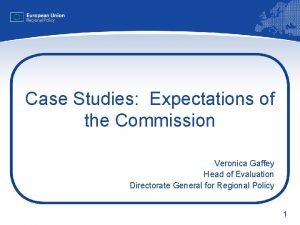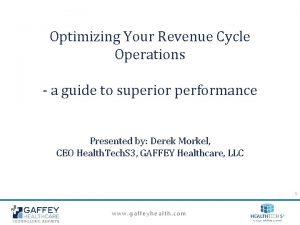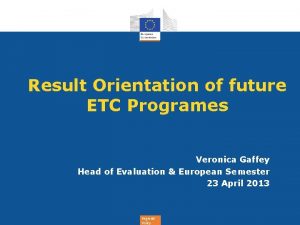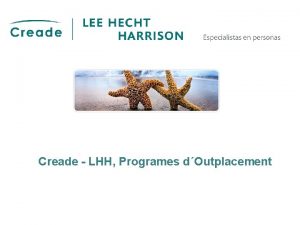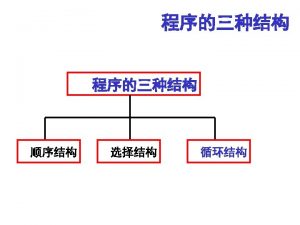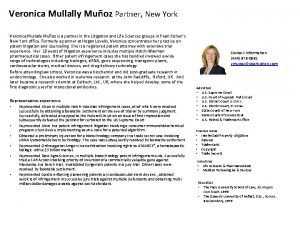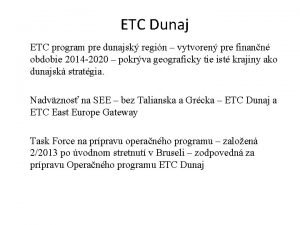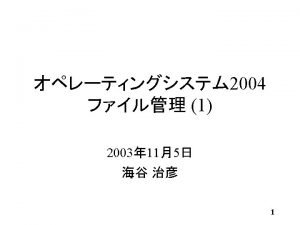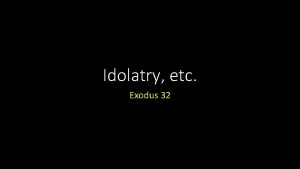Result Orientation of future ETC Programes Veronica Gaffey












- Slides: 12

Result Orientation of future ETC Programes Veronica Gaffey Head of Evaluation & European Semester 23 April 2013 Regional Policy

Learning from the Past Ex Post Evaluation of 2000 -2006: Ø We could quantify the activity (outputs) of Interreg, but not the impact Ø Policy objectives and programme strategies not specific or focused Ø Indicators and target setting not aligned with objectives Trying to capture the outcomes of 2007 -2013 programmes: Ø Pilot exercise run by Interact Ø Useful reflection process, BUT Ø Impossible to build a result orientation into a programme ex post… 2

Future Result Orientation o An intervention logic that incorporates: Ø Selection of investment priorities and corresponding specific objectives – which relate to the needs of the territory to be addressed Ø Result indicator which captures the intended change for the territory/sector – baseline and target (qualitative or quantitative) Ø Output indicators which reflect the direct activities of the priority (common and programme specific), cumulative target values Ø Allocation of resources 3

A Performance Framework Ø Monitor that implementation is as planned Ø A subset of programme indicators Ø Financial & Output indicators & Key Implementation Steps Ø Milestones for 2018 and Targets for 2022 Ø Must be unambiguous and milestones and targets realistic Ø Possible suspensions and corrections for nonachievement Ø Will NOT answer the impact question (what have been the effects of the policy? ) 4

Difference: Results Orientation and Performance Framework? • Interlinked but distinct: Ø Results orientation is wider and locates the programme in its context Ø Performance Framework is about efficient implementation of the programme 5 Regional Policy

Results Focus in Programme Design • Guiding questions: Ø What do you want to change? Ø What indicator can capture this change? Ø What is the baseline (the situation before the programme)? Ø How will the outputs of the programme contribute to change? • Results relate to change in the region/sector – not just for supported entities Regional Policy 6

Role of Result Indicators Ø Capture what you want to change Ø Should be close to policy – so that the policy may be reflected in the evolution of the result indicator Ø Targets quantitative or qualitative Ø Regular monitoring to prompt policy debate (not sanctions) Ø Selected by programmes – not imposed top down – recognising the different "journeys" to EU 2020 Ø Evaluation to disentangle the contribution of the policy to change from the influence of other factors (impact) 7 Regional Policy

Role of Output Indicators • Output Indicators: Ø Capture what the resources are spent on Ø Common & Programme Specific indicators Ø Baselines zero, Quantified cumulative targets Ø Rooted in an intervention logic - how should this amount of resources spent on these outputs contribute to change in result indicator? – to be assessed in ex ante evaluation 8 Regional Policy

Common Output Indicators Ø Relate to the most frequently implemented actions Ø Provide aggregate information for communication purposes Ø 46 indicators for ETC – 40 general and 6 ETC-specific Ø Should be complemented with programme specific output indicators when necessary Ø Avoid numbers of projects, or numbers of solutions/mechanisms/agreements – as in aggregate these are not meaningful 9 Regional Policy

Challenges Ø Defining the specific objectives and associated result indicators – this requires choices to be made Ø Establishing the baseline and targets – qualitative or quantitative(the ex ante evaluation can help) Ø Understanding the intervention logic Ø Translating the result indicators into selection criteria to ensure projects will contribute to the results Ø Making sure that performance frameworks represent the priorities and that milestones and targets are fixed at an appropriate level 10 Regional Policy

Reference documents - Guidance Monitoring and Evaluation for ERDF/CF Performance Framework & Reserve – being consulted Pilot Tests on Result Indicators Ex ante evaluation (ERDF, ESF, CF) http: //ec. europa. eu/regional_policy/information/evaluations/guidanc e_en. cfm#1 11 Regional Policy

Thank you for your attention! Regional Policy
 Veronica gaffey cv
Veronica gaffey cv Veronica gaffey
Veronica gaffey Stand alone operating system
Stand alone operating system Future perfect e future perfect continuous esercizi
Future perfect e future perfect continuous esercizi Future perfect e future continuous
Future perfect e future continuous Dnfb benchmark
Dnfb benchmark Geocentric orientation company example
Geocentric orientation company example Future continuous and future perfect
Future continuous and future perfect Past continuous diagram
Past continuous diagram Future nurse future midwife e learning
Future nurse future midwife e learning Future perfect tense
Future perfect tense Future plans and finished future actions
Future plans and finished future actions Future perfect interrogative
Future perfect interrogative
